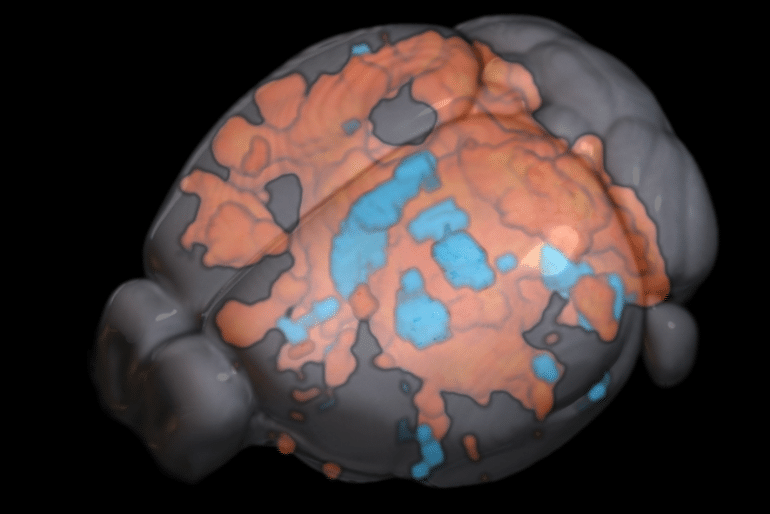
New Technology May Help Inform Brain Stimulation
Summary: A new strategy that utilizes ultrafast fMRI is ready to capture brain activity at sub-2nd levels. The strategy makes it possible for for actual-time checking of the mind less than stimulation disorders.
Resource: College of Queensland
Mind stimulation, these as Deep brain stimulation (DBS), is a strong way to address neurological and psychiatric ailments. Though it has presented therapeutic reward for victims of Parkinson’s, Alzheimer’s, and dependancy for extra than a decade, its underlying neural system is not still completely comprehended.
Researchers at the Queensland Mind Institute (QBI) are now a single stage nearer to unravelling the secret of brain activity to much better recognize this system and potentially predict DBS results.
The brain is a really complicated community of circuits organised hierarchically with extensive-ranging connections. Connections go in different instructions, forwards and backwards, and involving neurons that are possibly excitatory – the accelerators of a reaction – or inhibitory – the brakes modifying a reaction.
“Say you want to move your hand – once that signal is initiated, we anticipate that the action that follows depends on the brain’s neural networks,” Associate Professor Kai-Hsiang Chuang said.
“What we really do not absolutely realize is how or when these structural and functional factors of the brain interact to eventually lead to the consequence of shifting your hand.”
Purposeful MRI (fMRI) is the most common strategy made use of to study brain networks. fMRI tracks blood move and oxygenation alterations next neural exercise, thus indirectly measuring the purposeful connections becoming fashioned, and offering us an indication of where by brain activity is propagating.
Brain exercise, even so, isn’t as basic as a sign travelling from space to area.
The team at the Chuang laboratory have created a new ultrafast fMRI method with a vastly enhanced temporal resolution, enabling them to seize the dynamics of brain activity at a sub-next stage.
Associate Professor Chuang explained the new procedure had led to much more thorough comprehension of how and when the brain’s structural and purposeful connections interact.
“The to start with new discovery we created is that brain activity not only propagates by means of structural wiring but follows specified preferential circuits depending on their excitatory and inhibitory neuronal distribution,” he reported.
“Communication amongst brain regions of related mobile forms gets more fluent, and the brain action more robust.”

The Chuang team tracked the brain action of mice equally when stimulated and at rest applying their ultrafast fMRI approach. When the mind was stimulated, exercise adopted the structural wiring in the forward path — from A to B and then B to C. When the brain was at rest, activity was a lot more dependent on mobile style organisation and much less on structural wiring, propagating involving C and B but not with A, if which is the place the preferential circuit was.
This signifies that how info is processed is truly dependent on your condition, where by it was previously thought that mind activity functioned in the similar way no matter if at rest or fast paced performing a endeavor.
“The second discovery we designed was that the blood sign detected by fMRI could replicate the network organisation and cell variety distribution,” Affiliate Professor Chuang reported.
“These findings have important implications for how brain construction shapes functionality, and how to forecast action based on the know-how of this construction. Far more almost, what we now know will influence the style and design of DBS and other mind stimulation procedures.
“The subsequent steps are to do the job with clinicians versed in mind stimulation to determine how we can utilise this understanding blended with human facts to assistance increase our comprehension of DBS.”
This extra detailed comprehension could empower us to better predict DBS effects and perhaps enhance its style and design for much better therapeutic results.
About this neurotech and DBS exploration information
Writer: Merrett Pye
Supply: College of Queensland
Call: Merrett Pye – College of Queensland
Impression: The image is credited to Associate Professor Kai-Hsiang Chuang / Queensland Mind Institute
Primary Investigation: Shut entry.
“Hemodynamic transient and purposeful connectivity adhere to structural connectivity and mobile kind more than the brain hierarchy” by Kai-Hsiang Chuang. PNAS
See also

Summary
Hemodynamic transient and practical connectivity follow structural connectivity and cell type around the brain hierarchy
The neural circuit of the brain is organized as a hierarchy of practical units with broad-ranging connections that aid details movement and functional connectivity. Scientific studies employing MRI point out a moderate coupling among structural and functional connectivity at the method level.
However, how do connections of distinctive instructions (feedforward and opinions) and locations with diverse excitatory and inhibitory (E/I) neurons condition the hemodynamic exercise and practical connectivity over the hierarchy are unknown.
Here, we utilised functional MRI to detect optogenetic-evoked and resting-point out functions over a somatosensory pathway in the mouse mind in relation to axonal projection and E/I distribution.
Working with a hugely delicate ultrafast imaging, we determined in depth activation in regions up to the 3rd get of axonal projections following optogenetic excitation of the ventral posteriomedial nucleus of the thalamus.
The evoked response and functional connectivity correlated with feedforward projections much more than responses projections and weakened with the hierarchy.
The hemodynamic response exhibited regional and hierarchical variances, with slower and a lot more variable responses in higher-get regions and bipolar response predominantly in the contralateral cortex.
Electrophysiological recordings advise that these mirror variances in neural activity alternatively than neurovascular coupling. Importantly, the favourable and damaging parts of the hemodynamic response correlated with E/I neuronal densities, respectively. On top of that, resting-point out functional connectivity was additional related with E/I distribution, whereas stimulus-evoked helpful connectivity followed structural wiring.
These findings reveal that the structure–function partnership is projection-, cell-style- and hierarchy-dependent. Hemodynamic transients could reflect E/I exercise and the increased complexity of hierarchical processing.
